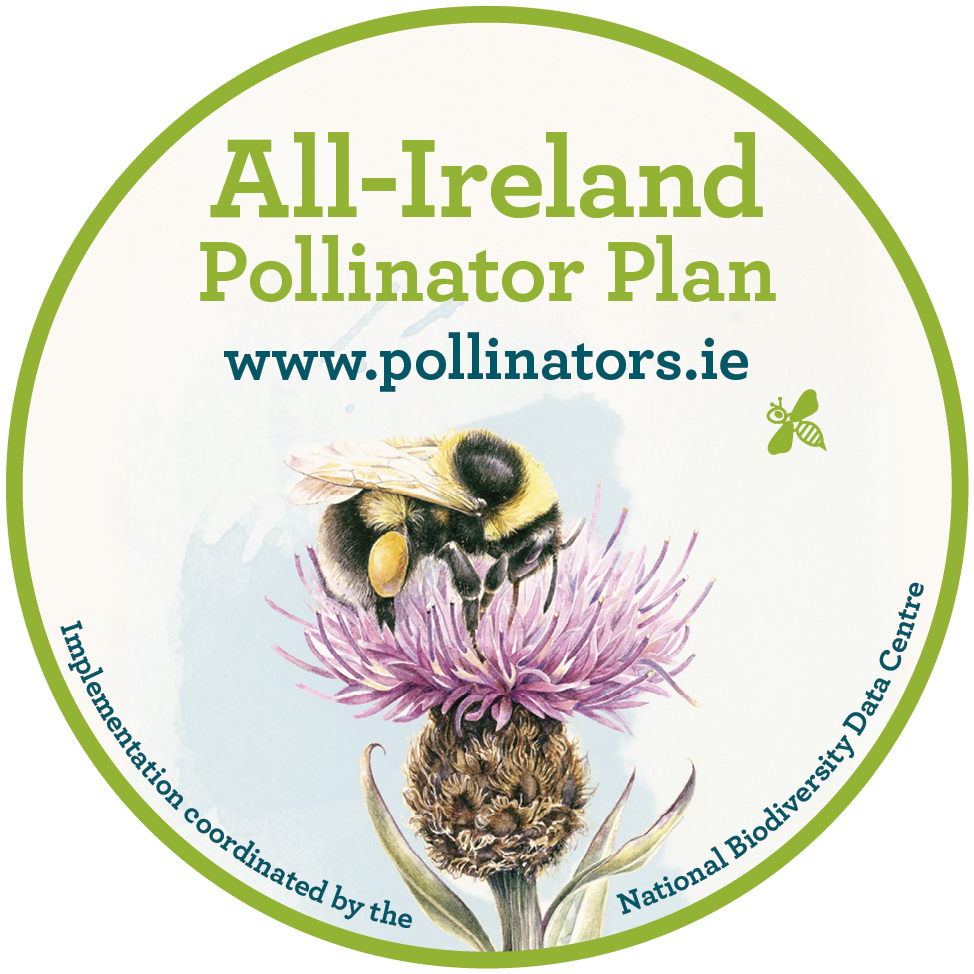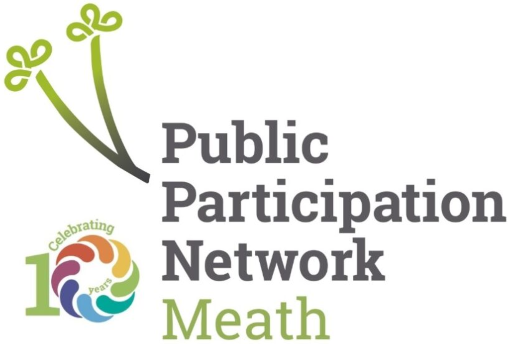All-Ireland Pollinator Plan: September 2023 Newsletter

The All-Ireland Pollinator Plan is a framework bringing together different sectors across the island of Ireland to create a landscape where pollinators can survive and thrive. Its implementation is coordinated by the National Biodiversity Data Centre.
To spot this month: keep an eye out for the Common Carder Bumblebee
By September, many of our bumblebees are thinking about hibernation. One of the last to be spotted is the Common Carder Bumblebee (Bombus pascuorum), which still flies into October. Keep an eye out for this very common bumblebee this month. It is variable and can become bleached in the sun. However, there are no other bumblebees that have all ginger hairs on the thorax, a ginger tail and then some black hairs on the abdomen. The photograph shows two Common Carder Bumblebees on Knapweed.
Submit your bumblebee sightings
To do this month: cut and lift the grass from your long-flowering meadow
September is the time when long-flowering meadows should be cut, and the grass removed. Having these meadows, however small, is a fantastic action for biodiversity, as it is returning a vital species-rich grassland habitat that has been lost in Ireland.
September is the ideal time to cut and lift, but please be aware that some Councils and large organisations may have cut earlier than this. This can occur where they have large areas to mow before the weather changes and the ground becomes too wet for large machinery. Some flexibility in cutting is fine. More important is that the grass is removed. Fertilising or mulching grass back in will enrich the soil and give grasses an advantage over any wildflowers in future years. Flower-rich meadows are a very fragile habitat that require the correct management each year. Photo below shows a long-flowering meadow managed by Waterford City and County Council.
Guide on creating meadows in local communities and gardens
Short video with top tips for creating a meadow
New short guide on protecting nocturnal pollinators
We are delighted to release a new free resource on how to help protect nocturnal pollinators. It was developed in collaboration with the Mayo Dark Sky Park and MothsIreland.
Many of our pollinators are busy at work during the night, whilst we are sleeping. Moths and other nocturnal invertebrates carry out essential functions in our ecosystem and are as important as their daytime counterparts. On the island of Ireland, light pollution has increased significantly over the last 25 years, leaving a brighter-than-natural nocturnal environment across most of the landscape. This places stresses on our nocturnal pollinators and other wildlife. This guide explains ten actions we can all take to help.
Guide on protecting nocturnal pollinators
Irish research finds ‘areas managed for wildlife’ are best for pollinators in urban parks
This research was conducted as part of an undergraduate project by Roisin Gowen at Trinity College Dublin, who assessed different park management strategies and how they impacted plant and pollinator diversity, and urban park users’ relationships with green spaces and biodiversity. It was supported by Dún Laoghaire–Rathdown County Council.
The research focus was inspired by the second objective of the All-Ireland Pollinator Plan, which focuses on “making public land pollinator friendly”. It sought to support this objective by determining which park management strategy is most effective in promoting plant and pollinator biodiversity. It compared amenity grassland, formal planting and areas managed for wildlife across parks in Dún Laoghaire–Rathdown.
The study found that areas managed for wildlife had the highest pollinator and plant species richness and abundance. Reducing management intensity not only reduces costs and saves time, but is also the best way to promote floral and pollinator diversity in urban parks.
Fantastic initiative happening in Cork – Blarney Street Pollinator Path
Since the Pollinator Plan launched in 2015, many incredible initiatives have taken place at the grass roots level. We are very grateful for the actions all of you take in support of the Plan. This is one of the most inspiring, and I strongly encourage you to read this lovely blog from Molly Garvey, of the Blarney Street Pollinator Path group. It explains how a neighborhood has come together to help pollinators in Cork City.
Read about the Blarney Street Pollinator Path
Can you help find new populations of the Ivy Bee this Autumn?
The Ivy Bee (Colletes hederae) is one of our most recent bee arrivals. It was first spotted at the Raven Nature Reserve (Wexford) in October 2021. It’s a solitary bee with an autumn flight period, to match the flowering of its favourite plant – Ivy. It nests in south facing banks of light soil. In 2022, the National Biodiversity Data Centre carried out a comprehensive survey, in collaboration with Prof Francis Ratnieks, to understand how far the bee had spread (current distribution below from Biodiversity Maps).
The Ivy Bee is quite large and has very distinctive bands of white on the abdomen. To make it a little easier, most of our solitary bees have completed their life cycles now, although there will still be hoverflies, wasps and honeybees on the wing. The Ivy Bee is likely to be around from mid-September until mid-October. Particularly check in areas along the east and south coasts. Submit your record if you think you’ve spotted this bee. Please attach a photograph if it’s from a new location.
Submit your solitary bee sightings
Tralee Wild Bee Festival
On the 12th and 13th of August, Tralee hosted the second ever Wild Bee Festival on the island of Ireland. An annual event coordinated by the National Biodiversity Data Centre, the Wild Bee Festival is a series of walks, talks and workshops for communities to learn about pollinators and how to help them.
In and around Tralee, several organisations have been doing amazing work for pollinators. We were delighted when they agreed to collaborate with us in running the 2023 Festival. Huge thanks to Kerry County Council, Tralee Bay Wetlands Eco & Activity Park, Transition Kerry, Tralee Tidy Towns and the Irish Wildlife Trust (Kerry branch). Kate Chandler, the Communities and Engagement Pollinator Officer, has written a blog on the lessons we learned from the event in 2023.
Last month for Flower-Insect Timed Counts (FIT Counts)
FIT Counts are an important way that you can help us monitor pollinators. Download the free FIT Count App, watch a 50x50cm patch of flowers for 10 minutes and count how many insects visit. You can carry out a FIT Count anywhere, and on any flower, but where you can, please use one of our 15 target flowers. The scheme runs from April to September each year. In September its especially useful to carry out FIT Counts on Ivy.
In 2022, the average number of insects recorded on a FIT Count was 8. Why not try one where you are to see how your site compares.

